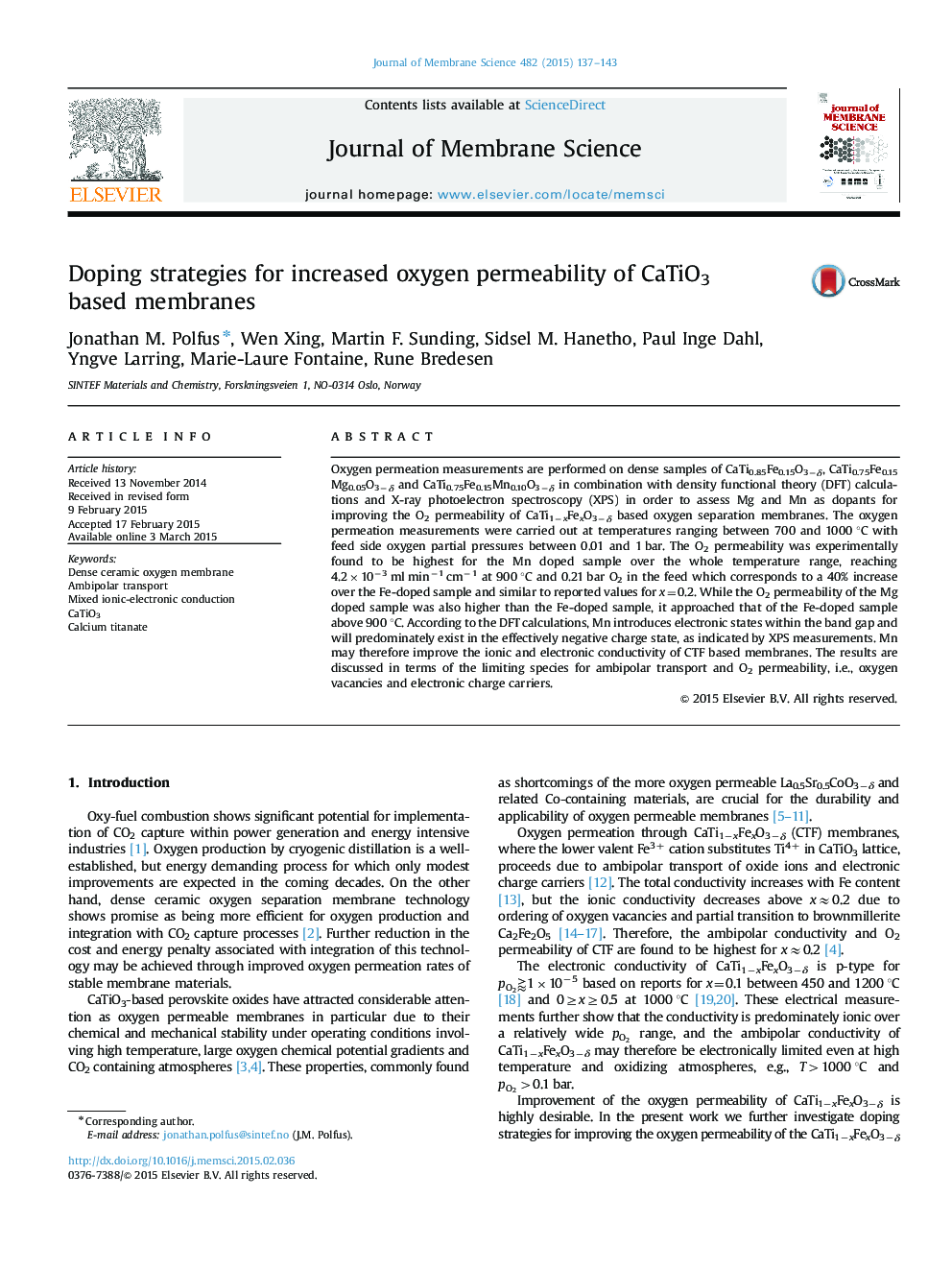| Article ID | Journal | Published Year | Pages | File Type |
|---|---|---|---|---|
| 632935 | Journal of Membrane Science | 2015 | 7 Pages |
•Chemically stable, cheap and non-toxic CaTiO3 based membranes investigated.•Mg and Mn-doped membranes characterized as function of temperature and pO2pO2.•Mn identified as suitable dopant for improving O2 flux.•Flux behavior correlated with defect model, XPS and DFT calculations.
Oxygen permeation measurements are performed on dense samples of CaTi0.85Fe0.15O3−δ, CaTi0.75Fe0.15Mg0.05O3−δ and CaTi0.75Fe0.15Mn0.10O3−δ in combination with density functional theory (DFT) calculations and X-ray photoelectron spectroscopy (XPS) in order to assess Mg and Mn as dopants for improving the O2 permeability of CaTi1−xFexO3−δ based oxygen separation membranes. The oxygen permeation measurements were carried out at temperatures ranging between 700 and 1000 °C with feed side oxygen partial pressures between 0.01 and 1 bar. The O2 permeability was experimentally found to be highest for the Mn doped sample over the whole temperature range, reaching 4.2×10−3 ml min−1 cm−1 at 900 °C and 0.21 bar O2 in the feed which corresponds to a 40% increase over the Fe-doped sample and similar to reported values for x=0.2. While the O2 permeability of the Mg doped sample was also higher than the Fe-doped sample, it approached that of the Fe-doped sample above 900 °C. According to the DFT calculations, Mn introduces electronic states within the band gap and will predominately exist in the effectively negative charge state, as indicated by XPS measurements. Mn may therefore improve the ionic and electronic conductivity of CTF based membranes. The results are discussed in terms of the limiting species for ambipolar transport and O2 permeability, i.e., oxygen vacancies and electronic charge carriers.
